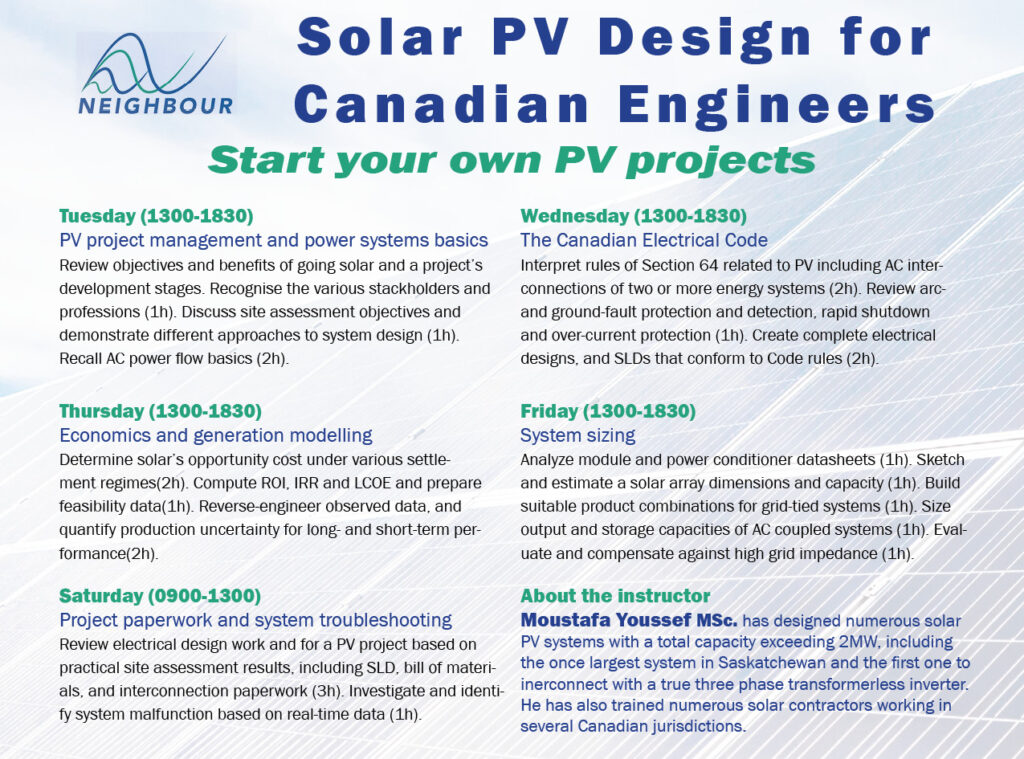A 5-day online course intended for engineers to kick-start their careers into the EPC world of solar PV and start their own PV projects.
Many of the introductory solar courses are geared towards electricians and sales professionals. Solar PV Design for Canadian Engineers is designed as an add-on to the math and applied science learnt by engineers. Students should have a strong grasp of Ohm’s Law, KCL and KVL. It is recommended you watch this video for a strong overview of the fundamentals of PV engineering before you attend the course.
Solar PV Design for Canadian Engineers
Course Outline
Tuesday 1300 to 1830 – Project management and power systems basics
Review objectives and benefits of going solar and a project’s development stages (1h).
Discuss site assessment objectives and demonstrate different approaches to system design (2h).
Recall basic circuit theory and AC power flow including real vs. reactive power and the per unit system (2h).
Wednesday 1300 to 1830 – The Canadian Electrical Code
Interpret various rules of Section 64 related to PV including AC interconnections of two or more energy systems and rapid shutdown (2h).
Apply voltage sizing and over-current protection in PV circuits (2h).
Create SLDs that confirm to Code rules and review product standards and certification (1h).
Thursday 1300 to 1830 – Economics and generation modelling
Determine PV’s opportunity cost under various settlement regimes (2h).
Compute ROI, IRR and LCOE and prepare feasibility data (1h).
Reverse-engineer observed data, and quantify production uncertainty for long- and short-term performance (2h).
Friday 1300 to 1830 – System sizing
Analyze module and power conditioner datasheets and create equipment packages (2h).
Sketch and estimate a solar array dimensions and capacity (1h).
Size output and storage capacities of AC coupled systems (1h).
Evaluate and compensate against high grid impedance (1h).
Saturday 0900 to 1200 – Project paperwork and system troubleshooting
Review electrical design work and for a PV project based on practical site assessment results, including SLD, bill of materials, and interconnection paperwork (2h).
Investigate and identify system malfunction based on real-time data (1h).

